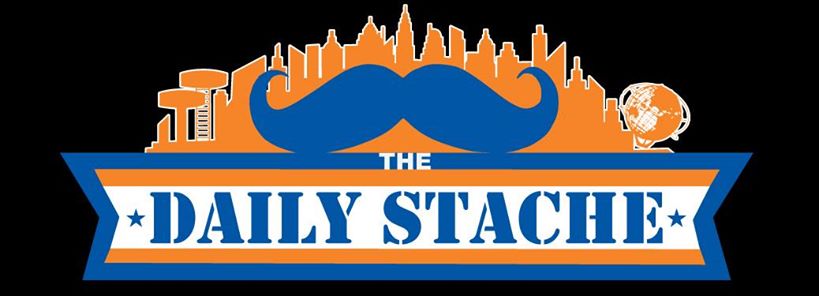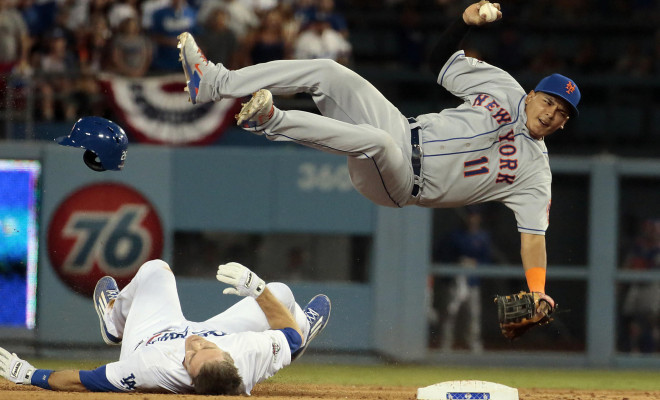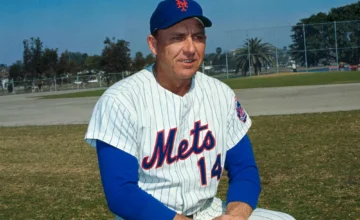There was a saying in the early 2000s that the Mets were owned by Fred Wilpon and Bobby Abreu. Somehow every time the Mets had a chance to get ahead in the NL East standings, Abreu would make a great defensive play or have a timely hit to win the game. When Abreu wound up on that, ahem, “team” in the Bronx, Mets fans were delirious with joy that they only had to face him six times per year rather than nineteen. Throw in Rollins, Victorino, Hamels and Howard and somehow you never could take the Phillies for granted. One of the peskiest players in their history was Chase Utley. Right along with Abreu, Utley had a way of breaking Mets’ faithful’s hearts every time they played.
The 2015 playoffs against Los Angeles were no different. Seeing Utley on the Dodgers gave all Amazins’ supporters a feeling of nausea. And his takeout slide of shortstop Ruben Tejada made you wonder if he was having flashbacks of himself in Phillies’ red rather than Dodgers’ blue.
Upon first viewing, Utley’s takeout slide was aggressive baseball. Watching the replays you saw just how far from second base he actually was. Utley needed a GPS to find second base after he completed his slide. Initially Utley was given a two-game suspension for that hard, (then considered) dirty play. Now we get news that, less than a month after the announcement of major rule changes in baseball, that the suspension has been overturned.
Hard slides have always been a part of baseball. Legend has it that Ty Cobb would sharpen his spikes to actually hurt infielders covering a base. Pete Rose famously dislocated Ray Fosse’s shoulder when knocking over the Indians’ catcher in the 1970 All-Star Game. An All-Star game! An exhibition game that doesn’t count in the standings! And they were friends!
As a result of the Utley-Tejada play, Major League Baseball has instituted Rule 6.01:
A “bona fide slide” for purposes of Rule 6.01 occurs when the runner:
(1) begins his slide (i.e., makes contact with the ground) before reaching the base;
(2) is able and attempts to reach the base with his hand or foot;
(3) is able and attempts to remain on the base (except home plate) after completion of the slide; and
(4) slides within reach of the base without changing his pathway for the purpose of initiating contact with a fielder.
The ramifications of this rule are many. First of all, any and all slides can now be reviewed with a managerial challenge. So the other rule that was made to speed the pace of games (thirty second pitching changes and shorter commercial breaks between innings) may be moot as every takeout slide could be challenged and reviewed ad nauseum.
There is also a certain subjectivity about distance from the base and the intent of the runner. Just as not all umpires have the same interpretation of a strike zone, they are now being asked to judge the intent of the runner.
The new sliding rule does actually balance the scales in that it takes the “neighborhood” play out of the game. Or more to the point: can actually be reviewed via challenge. It’s always been kind of silly that you can force a player out when three to four feet away from the base. The neighborhood play was always considered “a given” as a certain out. The takeout slide was the only way to neutralize the relay to first base. When the runner to second was out, his job wasn’t over in making sure that the runner to first would be safe. This new rule change, at least, means that both the runner and the infielder will have to actually race to the bag. Of course, that brings up the question: will infielders be risking injury by having to stand there and absorb the blow from the sliding runner? Only time will tell.
Then of course you wonder if this will change aggressive running techniques. Like in football, where rule changes against defenders led to more offense, could this rule change lead to less offense in baseball?
There is nothing new about a rule change that’s based on one play that led to an injury. Takeout slides of home plate were re-defined following Giants’ catcher, Buster Posey’s broken leg. In football fumbles, sacks and incomplete passes were re-defined with the tuck rule (that followed a playoff fumble by the Patriots’ Tom Brady against the Raiders). Former Rangers’ “goon”, Sean Avery used to stand in front of Devils’ goalie Martin Brodeur waving his hands obstructing his view. That led to rule changes regarding offensive players near the crease and, eventually, the creation of the “trapezoid” behind the goal line. There’s certainly little point in even mentioning how quarterbacks are protected from below the knee sack attempts.
Dodgers fans, just like Marlins fans (it was Marlins’ outfielder Scott Cousins that collided with Posey), will ask if their team is being unfairly targeted. It depends on which team you root for when determining hard scrabble play versus cheap ones.
There was something strange about the shortstop position for the Mets in 2015. First you had Wilmer Flores tear up (I guess there is crying in baseball) at the prospect of being traded for Carlos Gomez. Then the Tejada takeout slide seemed like a certain derailment of the Mets’ championship aspirations. You had to wonder if the position was just cursed. Baseball’s rule book (unlike the opinion of the late Supreme court Justice Antonin Scalia on the United States’ Constitution) is a living breathing document that must, and does, adapt with the changing times. Hard slides have always been as much a part of baseball as the bunt. But as player salaries have escalated so that even bench players are millionaires, new rules to protect the players are not only necessary but vital.
Now, of course, Mets’ fans must sit back and wonder which current or former Phillie will find a way to get under the skin. It makes you wonder if somewhere Bob Boone, Manny Trillo, Gary Matthew or Bob Dernier are lying in wait to get the ultimate revenge.
—
Lifelong Mets fan, Jordan Silver has been a journalist and marketing and multimedia consultant for over twenty years. He has produced documentaries and television productions both nationally and internationally. Aside from his own blog which observes politics and modern culture, he has been published in the Miami Herald, ABCNews.com and various other publications. His company, Ag Media Solutions, Inc. (www.agmediasolutions.com), represents several boutique firms as their outsourced marketing department. In addition, his line of shirts, Mondo Monster Wear (www.mondomonsterwear.com), features designs that are parodies of sports and pop culture. He is a great fan of Howie Rose and can be found most warm days on his hammock listening to the radio broadcast with his family.




